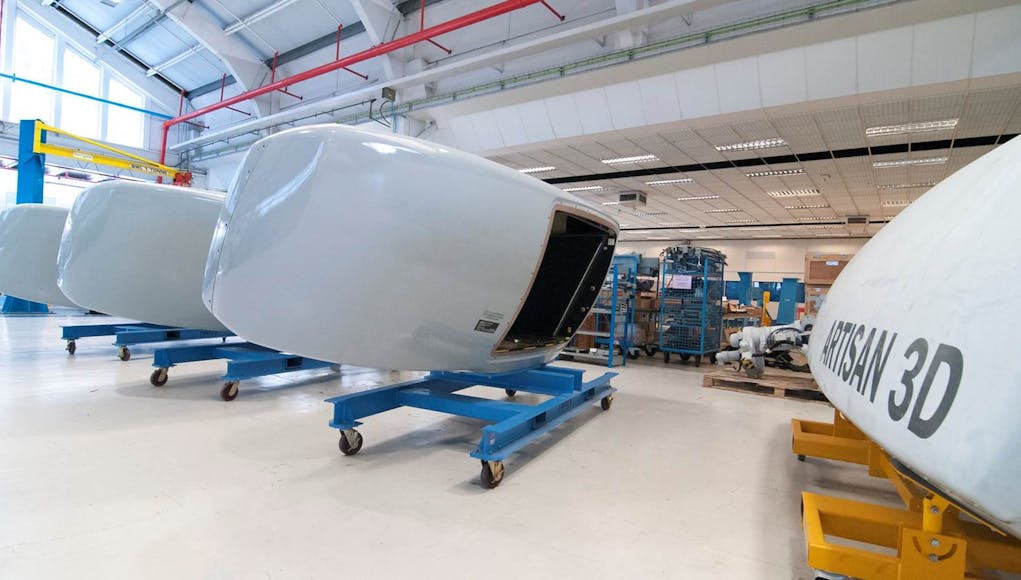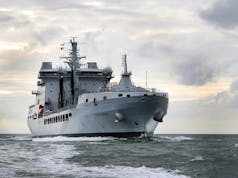Analysts at Forecast International have released their latest analysis of the naval radar market.
‘The Market for Naval Radar Systems’ is a detailed study of 37 unique radar programmes that as a group indicate the industry trends that will dictate growth and shrinkage in the larger naval radar market over the forecast period of 2019 through 2028, say the firm.
In the analysis, Forecast International say it breaks the market down into seven segments: Air Defense, Electronic Countermeasures, Fire Control, Navigation, Search & Track, Surveillance, and Other. The programs comprising the Air Defense segment will be worth $7.902 billion alone, making it the most valuable market segment.
“Over the next 10 years, Forecast International estimates that the programs covered in the study will have a total value of at least $15.814 billion. From 2019 through 2028, the Production phase will be the most valuable: 1,278 radars are forecast to be produced, accounting for $10.073 billion of the overall market, or 63.7 percent. The remaining value is accounted for by the Pre-Production (RDT&E) and Post-Production (O&M) phases.
Some of the naval radar industry’s most exciting next-generation systems, such as the SPY-6 Air and Missile Defense Radar (AMDR), are explored, as are older but still valuable systems such as the SPY 1. Over the coming 10 years, next-gen systems will garner sizable amounts of pre-production (RDT&E) funding, while older systems, which require regular maintenance and upgrades to maintain their efficacy, will draw large amounts of post-production (O&M) funding.”
The analysis also takes a look at the top companies operating in the naval radar sector. The 15 prime contractors identified in the analysis, all of which are associated with the featured programs, are representative of the global naval radar market’s most significant players. The leading contractors in the market will be Raytheon and Thales, which will achieve the first and second highest earnings, respectively. For added perspective, the analysis includes a Manufacturer Varies category that is useful for identifying programs that will offer subcontracting opportunities say the firm in a release about the report.
“Forecast International provides our customers with what we believe to be the most extensive program-focused market analysis available,” said Senior Radar Analyst C. Zachary Hofer.
“As much as is possible, Forecast International includes coverage of every major naval radar program in the world. Due to their foundational nature, these diverse programs, when analyzed as a sample group, provide a highly accurate barometer of the market environment.”














Would be nice if there was more details on what country or company makes what systems.
Raytheon is USA, Thales seems to be a combined Franco Dutch effort. Saab are Sweden. BAE is UK, Seafar is Australia, they are the main systems I am aware of.
I dont see BAE winning many exports relative to the first 3.
Saab seems to be the main competition with Artisan but I have not been able to see any articles giving an accurate comparison between them.
Some people on this forum have suggest Artisan is outdated as its not AESA which is a bit worrying considering its only new to the RN and will equip the T26.
The company is CEA not seafar 😛 the radar (One of them) is CEAFAR.
Thales Group (formerly Thompson-CSF) is French, but bought radar specialists Racal (which also owned the Thorn EMI radar business), MEL Equipment and Aveillant in the UK and Signaal in the Netherlands. The combined French, British and Dutch radar manufacturers explain Thales strong position in the market. BAe acquired the GEC-Marconi radar business, which had acquired Plessey and Ferranti’s defence electronics businesses (Ferranti collapsed in 1993 after buying ISC in the USA – which turned out to be a fraudulent illegal arm business – Ferranti’s core radar business was always profitable). SELEX ES, another major UK radar producer, is now Italian owned and branded as Leonardo (since 2016). The SELEX and Westland Helicopters acquisitions explain Leonardo’s strong position in the UK defence industry. Northrop-Grumman bought Litton, who in turn had bought Decca radar in the UK, and Raytheon also have a plant in the UK (they bought the A. C. Cossor radar business in the 1960s and market their products as Raymarine). Kelvin Hughes is another UK manufacturer and SAAB have a UK presence too.
The Artisan radar is very good. However, I believe it has reached the end of its usefulness against the next generation of anti-ship missiles for two reasons.
1. A single antenna face that rotates once every 3 seconds.
2. It’s a PESA radar so isn’t as adaptable or future proof as an AESA radar.
Unlike Sampson which uses a back to back antenna array. The Artisan only has the one. This means that the dead zone that follows the antenna as it rotates last longer. So the system must use predictive tracking to monitor where the threat is going. As speeds of missile go from supersonic to hypersonic. This time delay will work against the system, as the missile is moving so much faster. It may have the capacity of tracking a couple at this speed, but increase the numbers and processing will take a major hit.
The radar is PESA not AESA. This means it requires waveguides to transfer the RF signal from the frequency generator (oscillator, amplifier etc) to the transmitting elements on the antenna. The radar will generate well over 50kW of radiated power, this will require cooling as well as a complex rotating waveguide. Because of the way the antenna is assembled a second antenna mounted back to back, will probably incur a significant weight penalty. Beside the additional cooling requirement. Building a second rotating waveguide that won’t interfere with other will be very costly.
I won’t go into the advantages of AESA over PESA. However, AESA offers significant flexibility in radar capability, especially with the type and number of beams the radar can transmit simultaneously compared to PESA. The best option would be to replace Artisan with Sampson. The Sampson is simply a generation ahead in performance.
BAE who built Sampson, have been developing it further. Rather than a singular hardware approach the radar should be considered as a digital radar. It’s the software that makes or break the capabilities of a radar. This is where the main focus of developments has been. BAE have a site on the Isle of Wight dedicated to developing the radar and its future iterations, such as using static array panels and researching different waveform use.
Thanks for the detailed response Davey. Hopefully we will see the next generation of Sampson as an upgrade on T26 or this T4x that is being proposed.
It will be interesting to see what follows Artisan and Sampson in RN service seeing how fast Technology is moving.